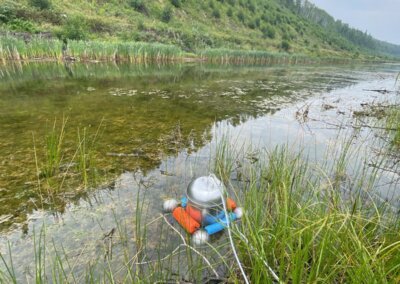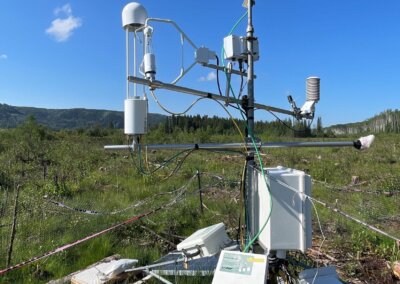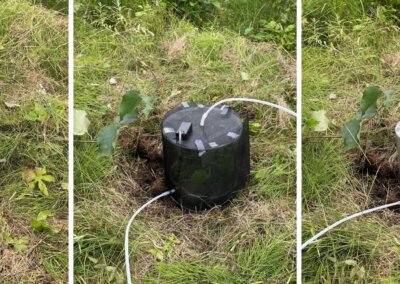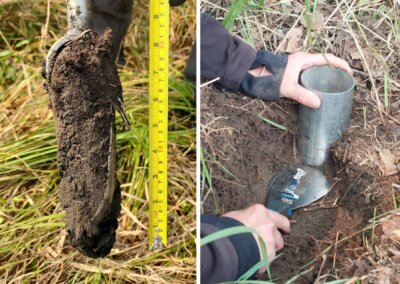About the Project
Hydroelectric facilities are recognized as sustainable, low-carbon alternatives to conventional fossil fuel plants. Despite their renewable nature, hydroelectric dams’ operations may contribute to greenhouse gas (GHG) emissions. Dam construction and reservoir impounding can lead to the organic matter’s decomposition, releasing CO2, CH4 and N2O from the water’s surface. Net emissions from hydroelectric facilities are crucial, defined as changes in emissions within the reservoir’s footprint area before and after impoundment. The complexity of emissions from reservoirs is influenced by various factors: location, climate, reservoir morphometry, time since flooding, watershed properties, flooded ecosystem types and reservoir management. Although GHG Measurement Guidelines for Freshwater Reservoirs are available (UNESCO/IHA), uncertainties persist due to a lack of reliable and standardized information.
GHD faced the challenge of developing a robust methodology to accurately determine net GHG emissions from a future reservoir footprint area covering 9,339 hectares, encompassing terrestrial, wetland and aquatic ecosystems. Ecosystem types were further categorized based on vegetation, land cover and soil types.
The conventional flux chambers method measures GHG emissions by isolating a small area and measuring gas concentration changes over a period. Due to CH4’s spatiotemporal variability compared to CO2, a substantial number of samples (~100/ecosystem) are required for a 10% precision level. The need for multiple measurements throughout the day/year to capture temporal variability poses challenges in terms of time, budget, labor and site safety. GHD developed an approach to address these challenges and uncertainties, aiming for a cost-effective methodology to accurately capture the spatial and temporal variability of GHG emissions from reservoirs during pre-impoundment phase. This provided an accurate estimation for net emissions calculation during post-impoundment.
Approach
GHD initiated a comprehensive assessment of pre- and post-impoundment emissions in vast reservoir areas with diverse ecosystems. Terrestrial Ecosystem Mapping identified 27 units in the pre-impoundment phase. In addition to the spatial variability of ecosystem units within the Area being either GHG emission sources or sinks, each ecosystem unit’s net GHG emissions can significantly change diurnally and seasonally.
Recognizing GHG variability within units, GHD opted for a targeted sampling strategy due to impracticality of traditional flux chambers. Focusing on expected flux hotspots during warmer months, the challenge was determining post-impoundment hotspots using pre-impoundment data.
Recognizing CH4 and CO2 origins from organic matter, GHD proposed a pre-impoundment carbon stock heatmap. A stratified, random sampling approach targeted 20 locations within each ecosystem type, targeting GHG hotspots. Direct emissions measurements were also completed using monthly flux chamber measurements and an eddy covariance system (a continuous measurement technique that measures the gases exchange to the atmosphere over a larger area than flux chambers), placed strategically to cover emission hotspots. Combining both techniques aimed to capture spatial and temporal variability.
GHD successfully developed a baseline monitoring program, encompassing these steps and completed data collection for the baseline phase followed by emissions estimation using integration data analysis.
Results
This project marks a significant milestone in establishing an accurate baseline GHG assessment across an extensive natural domain. Results align with studies, affirming the efficacy of the adopted approach. Achievements include an integrated method incorporating flux chambers and an eddy covariance system, a carbon stock heatmap for precise measurement selection, bridging the gap between research and industrial applications, marking a pivotal step towards more sustainable electricity resources.
Service(s) Provided
• GHG Assessment Program Design for a Large Natural Domains
• Navigation of Emissions Complexity through Integration of Conventional and Novel Methodologies
• Comprehensive Data Integration and Analysis
• Bridging the Gap Between Research and Industry
• Support for Air Emissions Compliance
Go back to projects in
View other projects from
Stay in touch with us
Subscribe to our mailing list!
Organization
Connect






